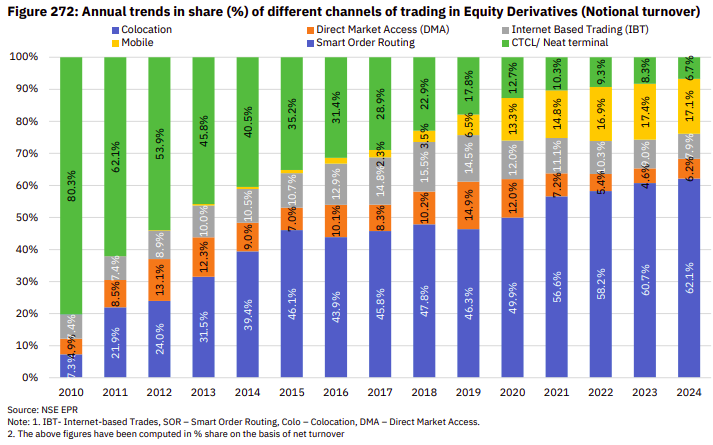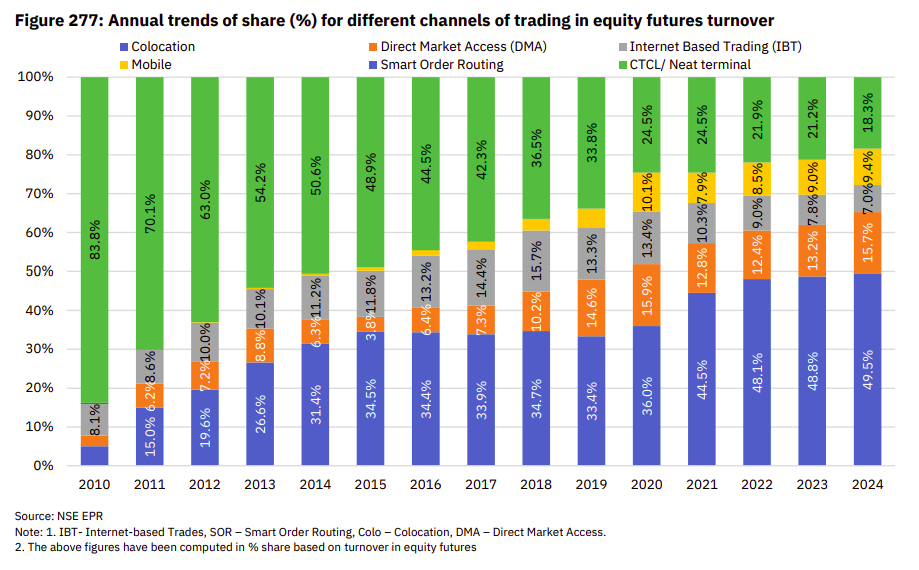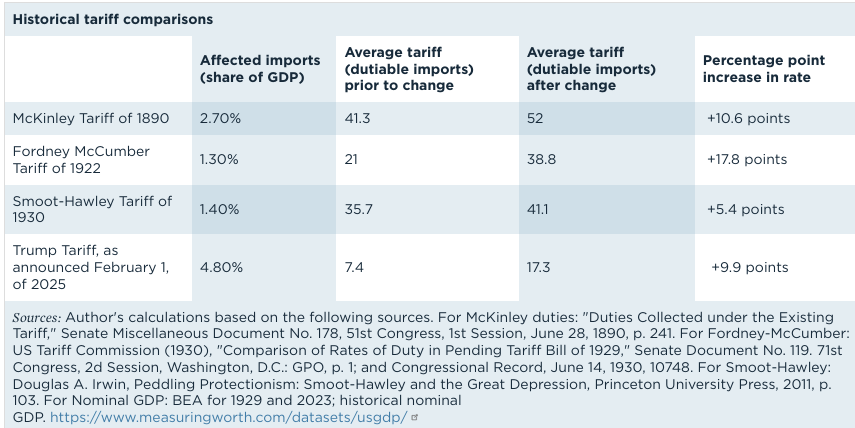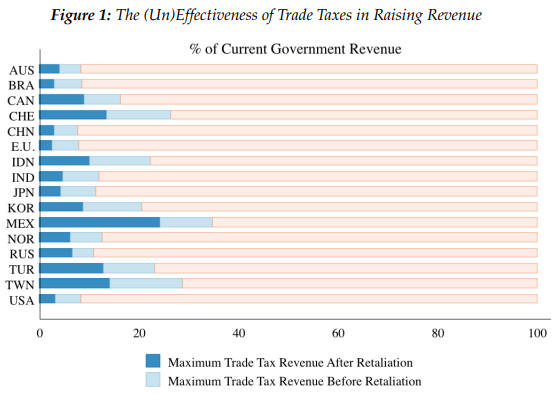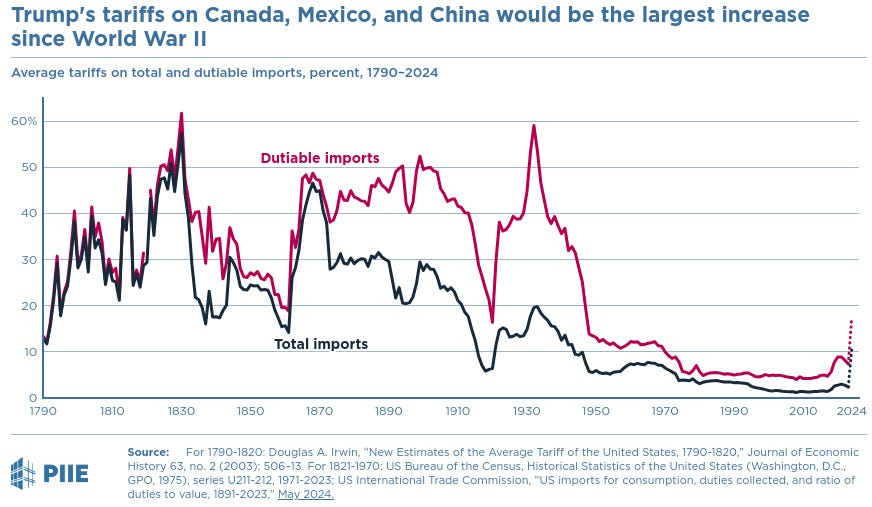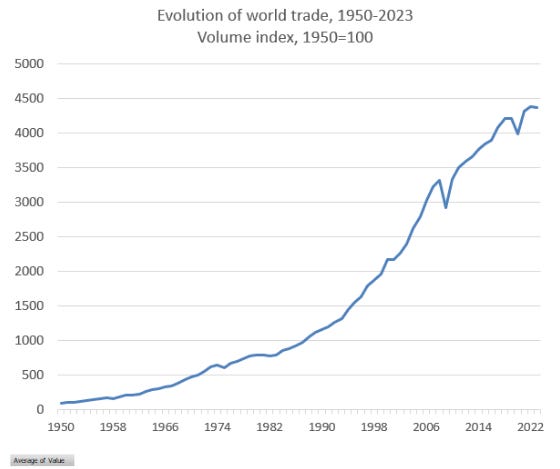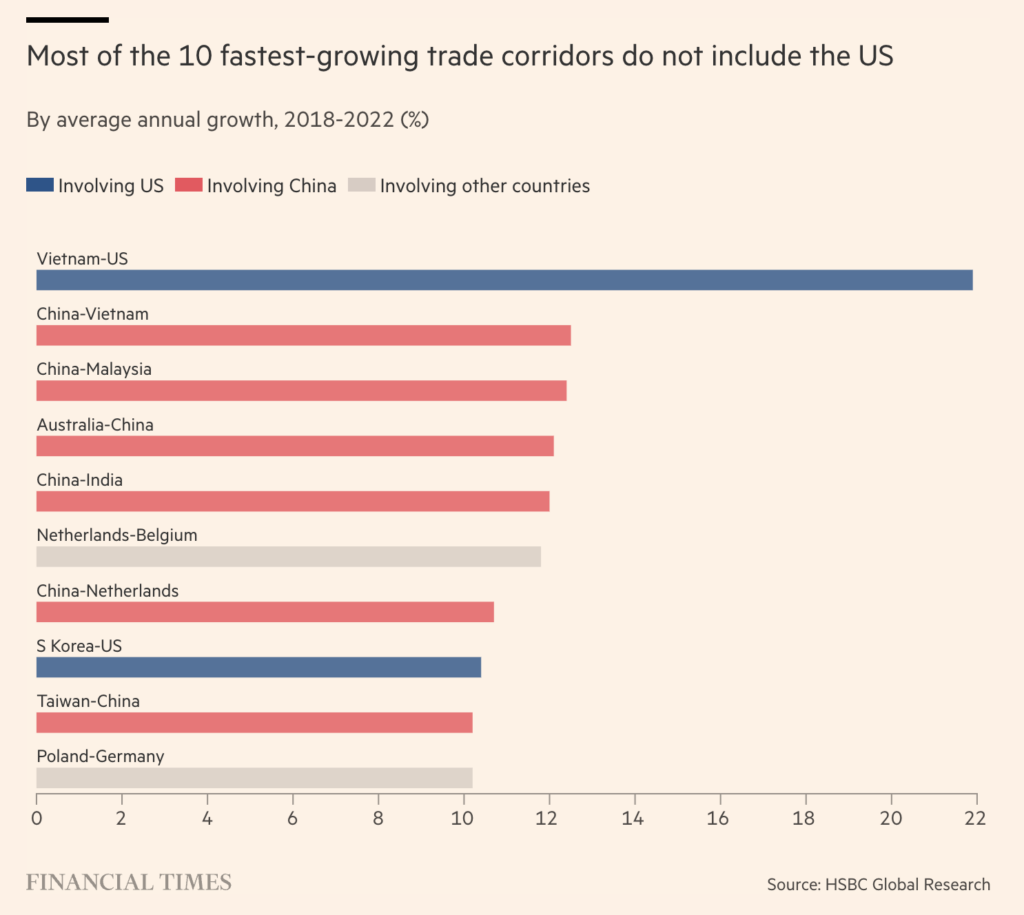Our goal with The Daily Brief is to simplify the biggest stories in the Indian markets and help you understand what they mean. We won’t just tell you what happened, but why and how too. We do this show in both formats: video and audio. This piece curates the stories that we talk about.
You can listen to the podcast on Spotify, Apple Podcasts, or wherever you get your podcasts and videos on YouTube. You can also watch The Daily Brief in Hindi.
In today’s edition of The Daily Brief:
- SEBI made some changes to algo trading
- Trump’s Tariffs & the Fall of Rules-Based Trade
SEBI made some changes to algo trading
The consultation paper on algorithmic (algo) trading, which SEBI released in December, laid the groundwork for changes aimed at safeguarding retail investors while enhancing accessibility to algo trading. We had covered this in detail when the consultation paper was first released, highlighting SEBI’s concerns about the risks posed by unregulated platforms and the growing interest in algo trading among retail investors. Now, with the release of SEBI’s final framework, most aspects remain similar to those outlined in the original consultation paper. Here’s a closer look at what has been finalized.
Before that, let’s quickly explain what algo trading is. Algo trading uses computer programs to automatically buy and sell stocks based on predefined rules. SEBI’s goal is to strike a balance between allowing retail participation in algo trading and ensuring market integrity. Algo trading, which currently accounts for about 70% of market volume (mostly driven by institutional players), is becoming more accessible to retail investors, thanks to broker-provided APIs and algorithm platforms.
Source: NSE Market Pulse
However, this access brought risks, with unregulated algo platforms often advertising strategies with false promises of guaranteed returns.
SEBI wanted to prevent chaos. So, the core ideas from December’s consultation paper remain intact.
Recognizing API Access and Algo Providers
Of course, there were always ways for retail traders to automate their trades using things like Excel macros, scripting actions on the web platform, and, more recently, broker APIs. However, none of these modes of automation were recognized as legitimate means for order placement by the regulators until now. With this circular, SEBI has officially recognized the use of APIs for retail algo trading. APIs (Application Programming Interfaces) allow tech-savvy traders to create custom programs for placing trades. However, this access now comes with stricter security and monitoring. Brokers are required to:
- Restrict API access to static IP addresses tied to client accounts.
- Implement daily OAuth-based authentication for secure logins.
- Enforce two-factor authentication to prevent unauthorized access.
Algo providers—platforms offering ready-made trading strategies to retail investors—are also being formally recognized. While SEBI won’t regulate them directly, exchanges will empanel and supervise these providers. Brokers, meanwhile, are tasked with performing due diligence before partnering with them.
Simplifying the Process for Retail Traders
Given that most retail algorithms operate at low frequencies (placing a limited number of trades per second), they don’t pose significant risks to the market. Therefore, SEBI has exempted these strategies from mandatory exchange registration unless they exceed a threshold number of orders per second. This allows many tech-savvy traders to automate their strategies without burdensome compliance procedures.
However, algorithms offered by algo providers are categorized into two distinct types, each with different levels of oversight:
-
White Box (Execution) Algos
These are transparent algorithms where users can fully see and understand how trades are executed. Since their logic is disclosed and easily replicable, they require less regulatory scrutiny. SEBI has instructed exchanges to establish a fast-tracked registration process for these algos to avoid delays in approval. -
Black Box Algos
These are proprietary strategies where the underlying logic is not visible to users. Typically used by more advanced or institutional players, black box algos require stricter regulation. Algo providers offering these strategies must register as research analysts and maintain detailed research reports documenting the algo’s logic and behavior. If any significant changes are made to the algo’s structure, such updates must be reported to the exchange, and the algo must be re-registered.
This classification ensures that while retail traders using straightforward strategies face minimal regulatory hurdles, algo providers offering opaque, high-impact strategies are held to higher standards of transparency and accountability.
When will this be implemented?
Detailed operational standards will be finalized by April 1, 2025, with full implementation of the new rules starting August 1, 2025.
What This Means for You
If you’re a retail trader interested in algo trading, the path just got smoother—though not without checks and balances. It’s no longer a Wild West where anyone can throw random strategies into the market. The rules are clearer, brokers are under stricter scrutiny, and exchanges will be watching trades closely.
As for algo platforms offering “get-rich-quick” schemes? Their days are numbered. The requirement to register as research analysts and disclose every detail of their operations means transparency is now mandatory.
For institutional players, not much has changed. They’ll continue using their proprietary algos, but with more oversight on their operations.
Trump’s Tariffs & the Fall of Rules-Based Trade
A few days ago, we touched upon Donald Trump’s tariffs on China, Canada, and Mexico.
We have a small update on this front: the tariffs against Canada and Mexico have been paused for one month. Both countries have committed to improving border security and drug enforcement, and are now scrambling to strike a deal with the United States. China, on the other hand, has launched retaliatory tariffs targeting America’s energy and automotive sectors. It also intends to challenge the tariffs before the World Trade Organisation, or WTO.
But that’s not what we want to talk about today.
Today, we want to give you some context on the scale of what’s happening. While our previous discussion explored the repercussions we expected to follow Trump’s tariffs, it didn’t fully capture the magnitude of the broader shift we’re seeing.
While nobody knows how things will look when the dust settles, we might be witnessing something truly historic — the dying breaths of what’s known as the ‘rules-based international order.’ That would mark a global sea change — one that threatens to upend a multi-decadal move towards globalisation.
An unprecedented shift
This current flare-up is unprecedented.
It’s the greatest single spike in tariffs America has seen in the past century, and it’s happening in a world that has transformed completely since then. To put this in perspective: before Trump took office, the average tariff on all American imports (i.e. both tariffed and non-tariffed goods) was 2.4%. Overnight, this has shot up to 10.5%. This is one of the largest tariff escalations in American history.
As we mentioned last time, these new tariffs are five times higher than the total tariffs implemented by Trump during his first administration.
Source: PIIE
This escalation isn’t merely a problem because of immediate concerns like inflation or employment shocks — although these will likely become major issues soon.
With such a dramatic change, the bigger challenge is how difficult such changes may be to reverse. As the economist Kyle Handley notes, the last time we saw such escalations, the return to normalcy took 50 years. Even if America comes to regret these escalations, getting back could well be a fifty-year project.
Source: Kyle Handley
If we’re stuck with a new regime for decades to come, it’s worth digging into what we’re really getting into.
The question of benefits
Of course, Trump has presented tariffs to his supporters as a masterstroke. However, when examined closely, it is difficult to see substantial benefits in his approach.
His most compelling claim is that these tariffs will help America reduce its reliance on imports by shifting toward more domestic manufacturing. While this might happen to some extent, things are far from straightforward. As we’ve discussed the last time around, international trade is deeply complex. In many sectors, businesses from other countries will likely look for loopholes around Trump’s tariffs, just as they did in his first term. Changes in foreign exchange rates, too, will offset some of their effects. Meanwhile, the American economy will have to undergo a long and painful adjustment to this new reality — inflicting considerable pain on both businesses, which currently work with complex multi-national supply chains, and consumers, who will face rising prices.
Trump has also claimed his tariffs will create enough revenue to eliminate the need for income taxes. This is far-fetched. While tariffs will certainly bring some money into America’s coffers, research suggests this revenue would be minimal compared to current tax collection – and that’s in a best-case scenario . If other countries retaliate with tariffs of their own, American revenues will suffer even more.
Source: Alashkar
Frankly, there is only one convincing benefit to his approach: America’s massive markets will give Trump significant political leverage in negotiations with other global leaders.
But it’s worth asking: at what cost ?
A historical perspective
Trump’s policies mark a return to the United States’ pre-1930s geoeconomic approach when it regularly imposed duties on its imports.
This strategy reached its apex with the Smoot-Hawley Tariff Act of 1930. This law, enacted just as the world was sliding into the Great Depression, increased tariffs on over 20,000 imported products. The response was swift and severe: dozens of countries imposed their own tariffs, and global trade plummeted by 60%.
While the Smoot-Hawley tariffs didn’t cause the Great Depression, it certainly made it much harder to escape. American export-oriented industries were hit particularly hard, with US exports falling by 50%. The global fallout was immense and complicated — spurring heightened geopolitical tensions for over a decade. Some scholars even argue it contributed to the outbreak of World War II.
Now, the Smoot-Hawley tariffs were implemented when imports constituted just 1.4% of American GDP. Today, that figure stands at approximately 15%. And yet, Trump’s new tariffs are more extensive in scope.
The disastrous outcomes of the Smoot-Hawley tariffs led to a dramatic shift in American policy. Since World War II, the United States has consistently tried to bring tariffs down — a lengthy process requiring decades of negotiations.
Source: PIIE
In the decades after the Second World War, America slowly became the backbone of the ‘rules-based international order,’ championing institutions like the United Nations, the World Bank, and the IMF. These institutions were designed to create a world where peace dominated, and uninterrupted international trade could flourish.
This ‘order’ wasn’t perfect – it was often manipulated by various countries, and it failed to prevent the many disasters of the last seventy years, from genocides to the Cold War. And through this period, America had many policy misadventures of its own.
By and large, however, this new order created the conditions for our modern world. As economist Doug Irwin argues, this new era was characterized by reciprocity, with countries mutually agreeing to reduce trade barriers. Despite its imperfections, it laid the groundwork for unprecedented global trade growth – between 1950 and 2023, in fact, global trade increased by 4,400%.
Source: WTO
The prelude: the death of the WTO
In the economic sphere, the greatest achievement of America’s rules-based order was the World Trade Organisation. It was put together through a long, time-consuming negotiation process that lasted for the better part of half a century — as America slowly got the buy-in of more than 120 countries. Today, however, the institution is all but dead.
The fundamental premise of the WTO’s framework was to prevent exactly the situation we have today. It was meant to safeguard a promise by countries across the world — that they would avoid putting up arbitrary tariffs, and stay away from favouring national industry. The benign environment it created allowed for the era of hyper-globalization that we’ve experienced since the late 1990s. It is why countries like India and China could embark on their current growth trajectories. Trump, however, is set on reversing this progress.
In its heyday, the WTO functioned effectively because the world’s major economies – the United States, Europe, Canada, and others – respected its decisions. This gave it legitimacy, while America’s backing went a long way in ensuring global compliance. If countries didn’t abide by its rulings, America could cut them out of global trade.
In recent years, however, the WTO has increasingly become a lame duck. This is partly due to its own structural flaws – it requires consensus among its 166 members before making any decision, which — because of their many conflicting interests — is nearly impossible. But it has also faced deliberate sabotage.
During his first term, Trump crippled the WTO’s dispute enforcement mechanisms, by blocking the appointment of judges to its appellate body. America never reversed track, even under Biden.
This set up conditions for the WTO’s failure. Currently, while parties can appeal WTO rulings, no appellate body exists to hear these appeals. This means that even when a WTO panel finds a rule violation, it’s powerless to act. The losing party can simply appeal, and because the WTO has no judges, the matter remains in indefinite limbo. And so, the entire dispute resolution process has ground to a halt.
Notably, the United States isn’t the only culprit here — China has long played fast-and-loose with WTO rules, and many countries, including India, have frequently blocked negotiations. But with Trump’s assault, the WTO lost any sanctity it had. International trade law, once a key pillar of global trade, became toothless. This was a big sign: the rules-based international order was decaying.
The real danger: uncertainty
Trump’s tariffs represent a completion of this decay. They’re a return to the beggar-thy-neighbor policies of the Smoot-Hawley era. Abandoning this mindset took 90 years of effort — progress we now risk completely undoing.
The greatest casualty of this escalation is a system of global trust that we took decades to build. Over the last 30-40 years, we’ve established numerous international agreements that create an environment that allows firms to trust in global trade, by locking in national commitments to this effect. The WTO was the foremost of these, but there have been several more, including the USMCA — which Trump’s recent moves violate.
The thing is, tariffs in themselves aren’t the biggest concern to trade — the real challenge lies in how, and why, they’re implemented. Global trade depends fundamentally on certainty. Evidence shows that businesses have a very low tolerance for volatility. They might work with less-than-ideal trading conditions, as long as those are predictable. Uncertainty , however, is devastating.
This makes sense: companies need to make substantial investments to establish foreign operations, and expect to recover these costs over time. While companies can generally navigate domestic issues, that certainty vanishes when dealing with foreign jurisdictions. There, they’re a complete outsider and are powerless before the whims of the local dispensation. If they can’t assess the medium-to-long-term safety of these investments, the business case of doing so becomes much weaker, and so, they’re more likely to hold off on investments.
This is what the rules-based international order was meant to fix. Research demonstrates that trade agreements play a crucial role in reducing uncertainty. They give firms the assurance that other countries would respect their right to trade, and in doing so, induce more trade.
Without this certainty, firms are less likely to trade internationally — unless they have high confidence in their trading partners. Trading ties will become shorter. The world risks transitioning from a single, large, global market into a series of smaller sub-markets. In other words, this risks reversing our current era of globalization.
This might not seem as critical in good times — although trade may decline if the rewards are high enough, countries will find ways around trade barriers, and firms will devise creative supply chain solutions. This might delay the immediate impact of Trump’s measures. But things can get substantially worse during economic downturns. That’s when two things happen: one, firms hold back from trade, and two, countries tend to step up protectionist measures.
As the economists Handley, Limao, and Carbello argue, during economic crises, access to international markets helps firms weather difficulties in their home countries, allowing faster recovery. This is what helped the world bounce back from the near-complete disaster of the 2008 global financial crisis, for instance. Trade agreements stop countries from relapsing into protectionism, allowing this effect to play out.
With the rules-based international order corroding away, this process will hit a wall. And so, one way to understand this new era is that global trade will become less resilient. While the effects might not be immediately visible, during times of stress, conditions may deteriorate rapidly and severely.
A silver lining?
There is, however, a potential silver lining. America’s withdrawal from leading the international economic order does not eliminate the need or demand for global economic leadership. It simply creates a vacuum—and nature abhors a vacuum. America could not have indefinitely backstopped the rules-based economic order. Something had to give, and with Trump in office, it has. However, as America steps back, there is now room for others to step forward—whether alone, as part of a BRICS-like consortium, or through some yet-unconsidered arrangement.
The world is already deepening its trading relationships outside the United States. Only two of the world’s ten fastest-growing trading corridors include the United States, for instance:
Source: Financial Times, via Phenomenal World
China, for one, definitely views this period as an opportunity to win the developing world’s loyalty away from the United States. It’s already claiming a larger role in promoting multilateralism, shifting from its long-standing practice of prioritizing its own interests. When the United States withdrew from the WTO and the Paris Climate Agreement, for instance, China quickly stepped in, vowing to strengthen both.
However, China alone probably can’t fill America’s shoes. We’re likely to see middle powers like Indonesia, Brazil, or India taking more active roles in global affairs.
The rules-based international order stands at a crossroads. While it may wither away, that’s far from guaranteed. We’re watching closely for what comes next.
Tidbits
- Nestle India is targeting a ₹7,500 crore revenue boost through its premiumisation strategy, with premium categories growing at a strong 16% CAGR since 2015. Despite this, the company faces headwinds from slowing urban consumption due to high food inflation and weak wage growth. Nestle is also banking on the ₹1 lakh crore tax relief from Budget 2025 to revive consumption, though part of this may be diverted towards savings or debt repayment.
- Titan Company reported a 25.2% YoY revenue growth to ₹17,740 crore in Q3FY25, driven by strong festive demand and a 26% rise in its jewellery business revenue to ₹14,697 crore. Despite this, net profit remained flat at ₹1,047 crore (down 0.6% YoY), mainly due to the impact of customs duty reduction. On a sequential basis, net profit surged 48.7%, reflecting recovery from a muted Q1. While revenue growth remained strong, the flat profit highlights margin pressures despite a 22.1% QoQ revenue increase.
- Bhavish Aggarwal’s Krutrim has announced a massive ₹2,000 crore investment for 2024, with an additional ₹10,000 crore planned next year, marking one of the largest AI commitments in India. Having already secured $50 million in funding, Krutrim became India’s first unicorn of 2024. The company is developing cutting-edge AI models like Krutrim-1, Krutrim-2, Chitrarth-1, and Dhwani-1, focusing on 10 Indian languages alongside English.
- This edition of the newsletter was written by Krishna and Pranav
 One thing we learned today
One thing we learned today
Every day, each team member shares something they’ve learned, not limited to finance. It’s our way of trying to be a little less dumb every day. Check it out here
This website won’t have a newsletter. However, if you want to be notified about new posts, you can subscribe to the site’s RSS feed and read it on apps like Feedly. Even the Substack app supports external RSS feeds and you can read One Thing We Learned Today along with all your other newsletters.
Subscribe to Aftermarket Report, a newsletter where we do a quick daily wrap-up of what happened in the markets—both in India and globally.
Thank you for reading. Do share this with your friends and make them as smart as you are ![]() Join the discussion on today’s edition here.
Join the discussion on today’s edition here.

